Water Margin City Scenic Area of the Three Kingdoms
The Wuxi Film and Television Base of CCTV is the first large-scale film and television shooting and tourism base in China. Founded in 1987, it is the first theme park in China that combines film and television culture with tourism. It is also the first 5A class tourist attraction in the country. With its unique function and charm, it attracts hundreds of production teams to shoot more than 1000 TV plays and movies here every year. At the same time, it attracts more than 3 million tourists to explore the secrets of film and television production. With the continuous renovation and change of scenic spots, good service and increasing popularity, the number of filmmakers and tourists who come here has steadily increased year by year, which is the first in the industry, the earliest and most successful film and television base recognized in China, and known as "Oriental Hollywood".
brief introduction
The Water Margin Scenic Area of the Three Kingdoms is a part of the Wuxi Film and Television Base of CCTV. It is listed in the first batch of 5A-level scenic spots in China.
The Three Kingdoms Water Margin Scenic Area is situated at the foot of the lush junzhang mountains and the shore of the beautiful Taihu Lake. It is a large-scale film and television cultural scenic area constructed by CCTV to shoot the 84-episode TV series The Romance of the Three Kingdoms. In 2001, it was awarded the national AAAA level scenic spot, and in 2007, it was awarded the 5A level scenic spot, which is one of the key scenic spots in Wuxi. It covers an area of more than 1500 mu, can use more than 3000 mu of water, and has complete film and television production facilities and professional technical personnel. With its unique natural scenery, magnificent humanistic landscape and complete film and television service function, the film and television base attracts many filmmakers and tourists from home and abroad, and promotes the prosperity of China's film and television industry and the development of Wuxi's local economy.
Overview of Three Kingdoms City
The Three Kingdoms City covers an area of 35 hectares and the scenery is very grand. According to the needs of the plot of The Romance of the Three Kingdoms, dozens of large-scale scenic spots, such as Wuwanggang, Ganlu Temple, Cao Ying Shui Hanzhai, Wuying, Qixing Temple, Racecourse and Dianjiantai, with a construction area of 85,000 square meters, have been built in the cities of the Three Kingdoms. Later, due to the development needs of film and television works, the scenic spots such as "Peach Garden", "Nine Palaces Eight Diagrams Array", "Fire Red Cliff Special Stadium", "Competition Arena", "Red Cliff Ancient Trestle Road" have been built successively, enriching the cultural content of the scenic spots and promoting the traditional culture of the nation.
The gate building of the Three Kingdoms is tall and powerful, with flags fluttering in the wind. It is even more solemn and solemn with the two gods and beasts of Tianlu and Fangxie in the square. This is where Zhuge Liangzhi set up an empty city plan in The Romance of the Three Kingdoms and retired from the shooting place of Sima Yi's hundreds of thousands of troops. Cao Jun's water and drought villages, which are covered by three Yuanmen, are huge in scale. They are composed of four enemy buildings and buildings and boats. They are the shooting places of such plays as "Burning Red Cliff in Fire", "Heng Kang Fu Poetry" and "Grass Boat Borrowing Arrows" in The Romance of the Three Kingdoms. Cao Cao Point will be on both sides of Taiwan, standing tambourine drums, vaguely visible a generation of heroes Cao Gong's prestige at that time. Standing apart from each other, it is also reminiscent of the countless heroes and heroes of the Three Kingdoms'time, who were finally transformed into a personage in the history of China in the rolling Yangtze River and admired by generations to come.
Three Kingdoms City Scenic
Spots
Three Kingdoms Gateway
First of all, the gate building of the Three Kingdoms is in sight. On the tall gate building of the Three Kingdoms scenic spot, flags and banners were displayed. Two Han Dynasty gods and beasts, Tianlu and Fangxie, stood in the square. The gate building was originally the empty city plan set up by Zhuge Liangzhi in The Romance of the Three Kingdoms, and returned to the shooting place of Sima Yi's hundreds of thousands of troops.
Han Ding
In the central square of the city, where flowers are crowded, a huge Han Ding stands proudly. Smoke billows up from the Ding, which adds the smoke of beacon fire to the scenic spots of the Three Kingdoms.
Peach Garden, Racecourse
On the right side of Chengmen Lou Avenue, dozens of military tents are stationed. Peach blossoms are in full bloom in Taoyuan. A hero's tearful tune sounds. Liu Guanzhang is drinking and vowing to sacrifice the world. On the hillside behind the Peach Garden, a group of three Kingdoms'figures, soldiers and horses, are vividly carved with both physical and spiritual features, reproducing the historical figures in famous works and legends. On the left side of the racetrack, the film and television equestrian stunt team taking part in the "Romance of the Three Kingdoms" actually performed "Three Britains vs. Lubu" for tourists every day. The scene was magnificent and exciting. More than 40 horses were well-trained horses. Tourists could also wear military uniforms to experience the heroic spirit of jumping whips and pointing out rivers and mountains in troubled times.
Caoying Water and Drought Village
In front of the main road, there are three lofty Yuanmen, which are the Caoying Water and Dry Village. It is composed of Cao Cao's commander-in-chief, Yuanmen, four enemy towers and buildings and ships. It is the shooting place of such plays as "Burning Red Cliff in Fire", "Heng Kang Fu Poetry" and "Grass Boat Borrowing Arrows" in The Romance of the Three Kingdoms. Cao Cao Point will be on both sides of Taiwan, standing tambourine drums, vaguely visible a generation of heroes Cao Gong's prestige at that time. Standing on the platform at the point of three stories, you can see the scenery of Shuizhai Village from a very long distance. The terraces on the land and the riverside buildings on the lake confront each other, which makes people marvel at the ingenuity of the designers and the ingenuity of the builders. The whole Cao Ying is also the shooting site of the scene of "Fire Red Cliff".
Arena, Chibi Trestle Road
Under the ancient city wall, about 100 meters long, is a dock-castle-style competition venue, which has the characteristics of the Han Dynasty. Its building area is 1,234 square meters. The "bullfighting in the Han Dynasty", "horsemanship acrobatics" and "animal training performance" here are thrilling and exciting. The Red Cliff Trestle Road, which was opened up by the mountains, is particularly quiet and elegant under the cover of green pine and green bamboo. It listens to the sound of the lake gently patting the shore. After experiencing a heavy historical picture, people find a place to relax their body and mind.
Wuying Jiugong Bagua Array
To bypass the trestle road is Wuying, Sanjiangkou, on the Bank of Dafuzhu, which is separated from Caoying Shuizhai. Wuying is built of stone, which is in sharp contrast to Caoying's wooden structure. Wuying mainly has the main landscapes of Zhou Yu's Point Jiangtai, Qixing Temple, Shuizhai, Nine Palaces and Eight Diagrams Array. The seven-star altar near the lake is in the shape of a pyramid, which is quite mysterious. "Zhuge Liang borrowed the East Wind" was filmed in the Seven Star Temple. It is said that when the film crew of the Romance of the Three Kingdoms filmed the scene of "borrowing the East Wind" here, the wind suddenly blew up on the calm lake.
In addition to the "Zhuge Liang borrows the East Wind" of the Seven Star Temple, the "Nine Palaces and Eight Diagrams Array" outside Wu Yingyuan Gate is also a good place for visitors to appreciate Zhuge Liang's magic tricks. "Nine Palaces Eight Diagrams" evolved from "Eight Diagrams" set up by Zhuge Liang in the "Fire Company" of the Romance of the Three Kingdoms. It covers an area of 2600 square meters and is composed of 13,000 wooden stakes with a diameter of 5 cm instead of stones. If visitors go deep into the array, they are like walking into a maze and puzzling, but they do not realize that "Eight Diagrams" can not come out of "Birth Gate". Zhou Yu Point General Platform, also known as Sang Point General Platform, is situated on a hillside 8.5 meters above the ground, in the shape of a military tent. Zhou Lang was full of vigour, and the dignity of deploying generals loomed.
Wu Ying pier
Through the Yuanmen to Wuying Pier, where the Zhou Yu commanding boat and more than 20 ancient warships used for filming were moored. The charred marks on the boat were still there, but the tragic situation of Cao Cao's collapse and "breaking down the sand" had become a thing of the past. After some renovation, these ancient warships regained their "residual heat" and filled with tourists sailed into the vast Taihu Lake to get a glimpse of the beautiful scenery of the lake and mountains. Tourists can also ride on high-speed speedboats and enjoy the fast-paced feeling of galloping.
Palace of Wu
On the north side of Wuying is the majestic Wu Palace. Two imperial towers stand in front of the palace gate. They are the tallest buildings in the scenic spots of the Three Kingdoms. In the Han Dynasty, they are symbols of high and low official positions. The Wu Palace built on the hill is scattered in layout and interdependent. The winding gray palace walls around it are bold and vigorous. In the main hall of double eaves, the word "joy" of Dahong stands out. This is the place where Liu Bei and Sun Shangxiang in The Romance of the Three Kingdoms married. Every day, the Three Kingdoms City Art Troupe holds a grand performance of Liu Bei's Recruitment for Kinship. The scene is grand and extraordinary, which attracts thousands of tourists, young and old.
Zhongyi Hall
In the Romance of the Three Kingdoms, Zhuge Liangtong, Confucianism and Wu Kangcao's Juxian Hall are now surrounded by ancient music. The performers of Xiangfan Ancient Orchestra in Hubei Province, dressed in Han Dynasty costumes, are holding replicas of bells and chimes of Zeng Houyi, known as the "Eight Wonders of the World". A famous Chinese and foreign song makes tourists deeply intoxicated with the charm and elegance of Chinese national culture, and intersperses a platform between them. The lively music and dance of the Han Palace can also make tourists enjoy the dancing gestures of the performers of the troupe.
Rear Garden of King Wu Palace
On the left is the Shuixie, where Liu Bei and Sun Shangxiang practiced swords and martial arts. On the bottom of the rear palace is Sun Quan's conference hall, study and dining room. On the second floor, Liu Bei's bridal chamber, dressed up in red cloth balls, looks happy and solemn. Visitors can imagine the lively scene at that time from the film-pressed photo of the Romance of the Three Kingdoms on the wall.
Sweet Dew Temple
The Ganlu Temple is situated in the south of the Wu King Palace, situated in the East and West dynasties. It consists of mountain gates, Buddhist halls, Bian Buddhist halls, drum pavilions, brick pagodas and fencing stones. The brick pagoda of Ganlu Temple is obviously different from that of later generations. It is the earliest form of Buddhist Pagoda in history and developed from the concept of Han Dynasty. The Ganlu Temple is the scene of "Wu Guotai's Kinship" and "Liu Bei's Wishing to Chop Stones by Recording Power" in The Romance of the Three Kingdoms. Tourists can worship Buddha and burn incense here.
Burning of the Red Cliffs
The Ganlu Temple stepped down and the "Red Cliff Fire" stunt hall, where tourists can enjoy the spectacular war scenes everyday. This is the first place in China to show film and television shooting technology and introduce film and television stunts through remote control operation model. The scale of war boats, sergeants, barracks and so on in the stunt hall is reduced in proportion. It is vivid and lifelike.
Three Kingdoms Scenic Spot Show
In the meantime, tourists can also watch the rich and wonderful performances arranged according to the main plots of The Romance of the Three Kingdoms, such as Lubu, Liu Bei's Recruitment for Kinship, Red Cliff on Fire, A Tale of the Empty City, Long Banpo in the Great War, etc. Here you can fully experience the historical atmosphere of warlords'disputes and competing for deer. After visiting the magnificent historical picture scrolls of more than 1,700 years ago, visitors can also go to the beach and lakeside bathing ground to wash their body and mind, or to "Sun Shangxiang Restaurant" for a shallow drink, overlook the window and have a rest. With its unique style and charm, the scenic spots of the whole three countries have attracted tourists from home and abroad and film and television production teams to visit and shoot, which truly embodies the characteristics of the film and television culture of China Television Corporation.
General situation of
Shuihucheng
Shuihucheng is adjacent to the scenic spots of the Three Kingdoms, covering 580 mu. It can be divided into three parts: prefectures and counties, Jingcheng District and Liangshan District. Prefectures and counties, including "Water Margin" in the story scenes reflecting the general outline of social life of the lower and middle class in the Northern Song Dynasty, have a strong architectural style, which not only caters to the needs of shooting, but also reproduces the historical atmosphere of the Northern Song Dynasty for people. The scenes of "Wang Po's bribery talk amorous feelings" and "Wu Song's fight against Ximen Qing" in "Water Margin" are all filmed here; the architectural momentum of Beijing urban area is magnificent and magnificent, including the imperial palace, Daxiangguo Temple, Fanlou, Gao Biao government, and so on. In "Water Margin", the plays of "Song Huizong's hearing the government in the imperial court" and "Lin Chong's private intrusion into Baihutang" are all filmed here. The Liangshan Mountains are built near the mountains and lakes, which clearly reproduces the magnificent scenes of Shuipo Liangshan. Inside Zhongyi Hall and outside the turning door, we can recall the heroic spirit of 108 heroes in that year, which makes us feel deeply.
Water Margin City Scenic Spots
The Water Margin Scenic Spot is another film and television shooting base invested by CCTV to shoot the large-scale TV series "Water Margin" after the Tangcheng Scenic Spot and the Three Kingdoms Scenic Spot. It broke ground on September 1, 1995, and started shooting in March 1996. The drama group of "Water Margin" was officially opened on March 8, 1997. Shuihu Scenic Spot is adjacent to the Three Kingdoms Scenic Spot in the South and Taihu Lake in the west. It covers 580 Mu and has a water area of 1500 mu for photography. The main landscape of Shuihu scenic spot can be divided into three parts: prefecture, county, Beijing and Liangshan.
Zishi Street, Prefecture and County
Prefectures and counties include stories and scenes in Shuihuzhuan that reflect the general situation of social life of the middle and lower classes in the Northern Song Dynasty, such as Yamen, prison, law court, neighbourhood, shop, manor, etc. The most distinctive scenic spot is Zishi Street. There are Wu Dalang Cake Shop, Wang Po Teahouse and Zheng Butcher Shop, which are well known to women and children. These buildings have strong ancient style, meticulous and lifelike old-fashioned craftsmanship, which created a specific historical atmosphere in the Northern Song Dynasty. Many fragments of Water Margin were shot in prefectures and counties, such as Zhang Dujian's Blood Splashing Mandarin Duck Tower, Wang Po's Bribery Talking amorous feelings, Wusong's Fighting to Kill Simon Qing, etc. In Zishi Street, you can see the traces left by the filming of "Water Margin".
Qingming Shanghe Street, Jingcheng District
The buildings in Beijing are magnificent and magnificent. There are imperial palace, Daxiangguo Temple, Fanlou, Gaobing House, and so on. The plays such as "Song Huizong's Listening to the Dynasty" and "Lin Chong's Private Running into Baihutang" in "Water Margin" are all filmed here. The important building of Jingcheng District, Shanghe Tu Street in Qingming Dynasty, was designed and constructed according to the layout of Hongqiao in the famous painting "Shanghe Tu in Qingming Dynasty", which was painted by Zhang Choduan in Song Dynasty. Water Margin scenic spot in this street has opened a variety of crafts workshops, shops and various folk performances, such as juggling, puppet show, magic, animal training and so on.
Zhongyitang in Liangshan District
The Liangshan Mountains are built by mountains and lakes, along which there are Liangshan wharf, Zhaimen, school yard, twisting gate, Broken Golden Pavilion, Zhongzhong main hall and other scenic spots. The Drama Group of Water Margin has filmed the plots of "Lu Junyi Uphill", "Liangshan Heroes Seats", and "Water Margin Sad Wind". More than ten imitation Song ancient boats and speedboats, such as Gao Bian official boats, boats, chariots and warships, and more than a dozen speedboats, have been provided for tourists to visit Taihu Lake.
In addition, there are some sporadic scenic spots built near the lake, which form a unique landscape between the lake and the mountain, such as Xunyang Tower with Songjiang Anti-Poetry and Shijie Village, the residence of Ruan's three brothers.
Water Margin scenic spot is not only the shooting base of TV drama "Water Margin", but also the shooting base of other historical drama. Since the opening up, more than 20 film and television drama groups have been received, including "Home Voyage", "Kou Lao Xier" and "Iron Bloody Boy", "Black Banner General", "Tao Li Mei", "Han Yu", "Zhu Silang Legend" and "The Journey of the Emperor" which have been broadcasted on various domestic television stations. Sometimes, there are five groups making films at the same time in a day at the Water Margin attraction. On March 22, 1998, the large-scale TV series Taiping Heavenly Kingdom, which was invested by Wuxi China Television and Television Base Co., Ltd. and created by China Television Drama Production Center, started shooting at Shuihu scenic spot. The Shuihu scenic spot has gradually become the ideal shooting base for the group.
Like Tangcheng and Three Kingdoms scenic spots, Shuihu scenic spot is a film and television shooting base as well as a tourist attraction. In addition to visiting the production process of film and television plays, tourists can also see the rich and colorful program performances in the city.
Show Performance of Water
Margin Scenic Spots
Twelve performances have been performed every day in Shuihu scenic spot. These elaborately arranged programs are exciting and moving, such as the large-scale siege performance "Taking Gaotangzhou for Righteousness", the lively street performance "Brotherhood Meeting" and "Yang Zhi Selling Dao", which show the Chinese Wushu culture "Yanqing Dawu", "Wusong Drunk Da Jiang Menshen" and "Liang Shanying". Hao and so on, you can see the water margin story anytime and anywhere, which makes tourists linger and forget to return. China Television Co., Ltd. has also used high-tech means to launch a grand display of film and television stunt explosion. Tourists can experience the thrilling and smoky war scene here.
With the broadcasting of the TV drama "Water Margin", the content of the water margin scenic spots is constantly enriched and improved, catering, shopping and other supporting services are constantly improved, and the water margin scenic spots have become a new hot spot of film and television tourism in eastern China and even in the whole country.
Scenic spot information
brief introduction
The Water Margin Scenic Area of the Three Kingdoms is a part of the Wuxi Film and Television Base of CCTV. It is listed in the first batch of 5A-level scenic spots in China.
The Three Kingdoms Water Margin Scenic Area is situated at the foot of the lush junzhang mountains and the shore of the beautiful Taihu Lake. It is a large-scale film and television cultural scenic area constructed by CCTV to shoot the 84-episode TV series The Romance of the Three Kingdoms. In 2001, it was awarded the national AAAA level scenic spot, and in 2007, it was awarded the 5A level scenic spot, which is one of the key scenic spots in Wuxi. It covers an area of more than 1500 mu, can use more than 3000 mu of water, and has complete film and television production facilities and professional technical personnel. With its unique natural scenery, magnificent humanistic landscape and complete film and television service function, the film and television base attracts many filmmakers and tourists from home and abroad, and promotes the prosperity of China's film and television industry and the development of Wuxi's local economy.
geographical position
The Three Kingdoms Water Margin Scenic Area is situated at the foot of the lush Junzhang Mountain and the shore of the beautiful Taihu Lake.
Self-driving route recommendation
Shanghai direction
Starting from Shanghai along Shanghai-Ningxia Expressway, after passing through Suzhou to Wuxi South around Taihu Expressway (Huazhuang, Nanquan direction) along Taihu Expressway to Nanquan exit along Lihu Avenue turning left to Gaolang West Road, 500 meters ahead (to Changguangxi Bridge) turning right to Shanshui East Road, turning left at the first Dingzi intersection To "Shanshui West Road" to the Three Kingdoms City. (There are pointing signs along the line, please drive your friends to pay attention to the observation.)
Hangzhou direction
Starting from Hangzhou turning from Shanghai-Hangzhou Expressway to Cha-Jia-Su Expressway heading for Nanjing from Shanghai-Hangzhou Expressway to Shanghai-Nanjing Expressway crossing Suzhou to Wuxi South under the junction of "Taihu Expressway" (Huazhuang, Nanquan direction) following Taihu Expressway to the outlet of "Nanquan" going straight along Lihu Avenue turning left to Gaolang West Road at Gaolang Road intersection and heading 500 meters (to Changguangxi Bridge) After turning right to Shanshui East Road, the first T-junction turns left to Shanshui West Road and arrives at the Three Kingdoms City. (There are pointing signs along the line, please drive your friends to pay attention to the observation.)
Nanjing
direction
New (Wuxi Express Inner Ring): Starting from Nanjing following the Shanghai-Nanjing Expressway to the exit of "Wuxi East" going straight to Shangjiang Hailu (south) of Guangnan Interchange Jingdu Interchange going south into the Express Inner Ring Jingdu Interchange Qingyang Road Jincheng Road (west) going westward Jincheng Bridge Taihu Scenic Area _Taihu Scenic Area, Lihu Bridge exit (without tunnel) Second traffic light left turn Shanglihu Bridge straight to Gaolang Road intersection, right turn to Gaolang West Road, 500 meters ahead (to Changguangxi Bridge) right turn to Shanshui East Road, the first Dingzi intersection left turn to Shanshui West Road to reach the Three Kingdoms City.
As it takes one year to demolish and rebuild the Jinkui Bridge on April 6, 2010, it is recommended not to take Taihu Avenue.
Detailed route: Under the urban area of Wuxi of Shanghai-Nanjing Expressway, along the elevated road sign (direction of Liangxi Bridge) - in the opposite direction (straight line) to the Yitou, there should be a road sign (Wuxi Scenic Spot is good, don't worry). Shanghai-Nanjing Expressway - Wuxi East Export - along Taihu Avenue - Three Kingdoms City.
Jiangyin direction
New (Wuxi Rapid Inner Ring): from Jiangyin Bridge to Xicheng Expressway Wuxi exit Wuxi exit Tongjiang Avenue Zhanjiang Interchange ShanJianghai Road (viaduct) enters the fast inner ring Fengxiang Interchange direction Fengxiang Interchange direction Huishan Tunnel direction Lihu New Town direction Huishan Tunnel Huhu Bridge direction QingqiqiqiqiqiqiqihuanhuanhuantaihuhuhuhuhuhuhuhuhuhuhuhuhuhuhuhuhuhuhuhuhuhuhuhuhuhuhuhuhuhuhuhuhuhuhuhuhuhuhuhuA. Yuejincheng Tunnel Shanglihu Bridge Go straight to Gaolang Road intersection, turn right to Gaolang West Road, go ahead 500 meters (to Changguangxi Bridge) turn right to Shanshui East Road, then turn left to Shanshui West Road, the first T-shaped intersection, and reach Sanguo City.
Yixing direction
From the Xiyi Expressway "Wuxi West" exit turn left to Sheng'an West Road for about 1000 meters turn right to Qian Rong Road elevated viaduct and go straight along (there are obvious signs along the road) turn right around Lake Road to Baojie Bridge and go straight to "Shanshui East Road" turn right to "Shanshui West Road" and go straight to the Three Kingdoms City.
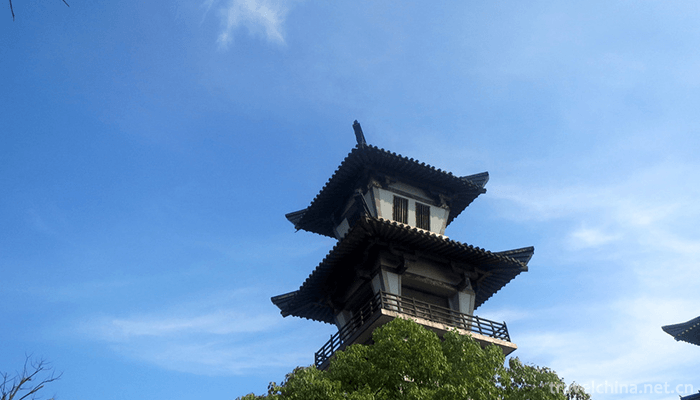
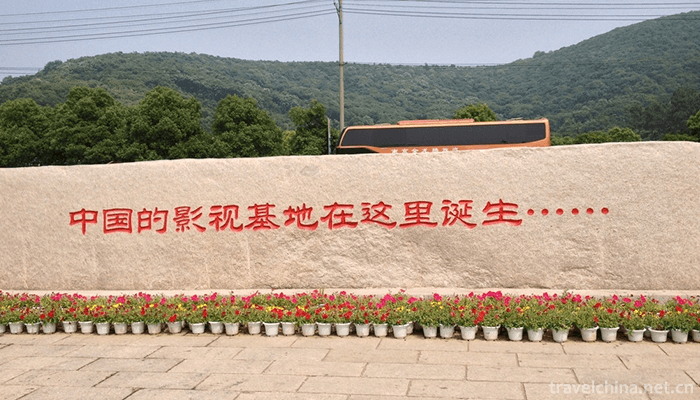
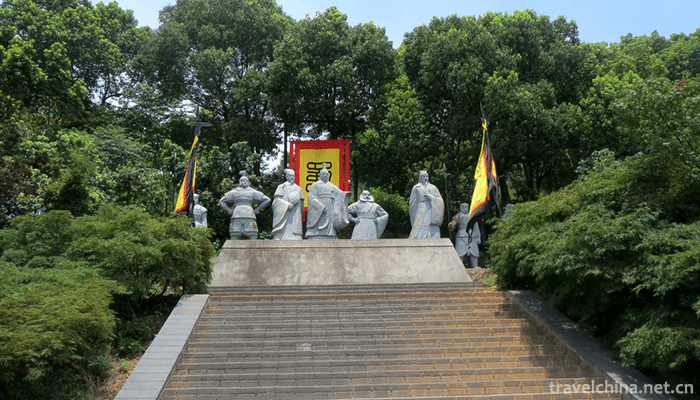
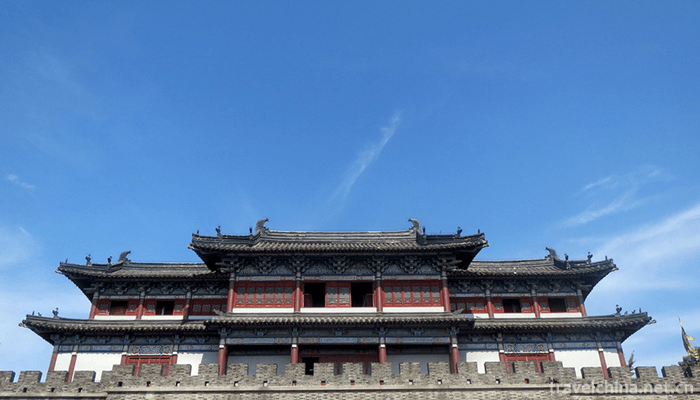

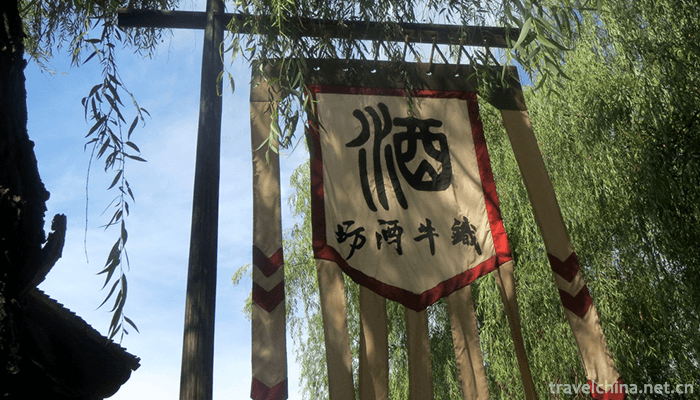
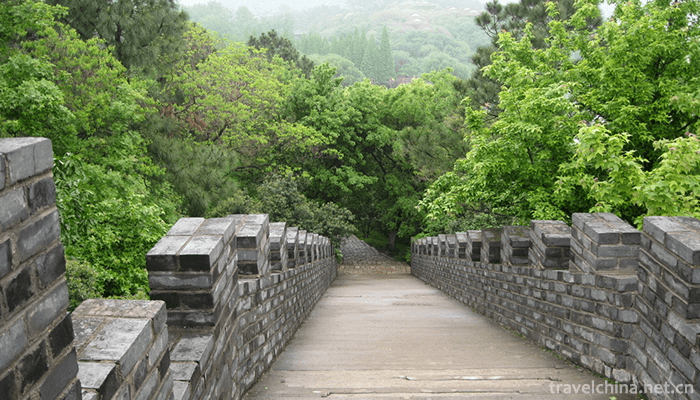
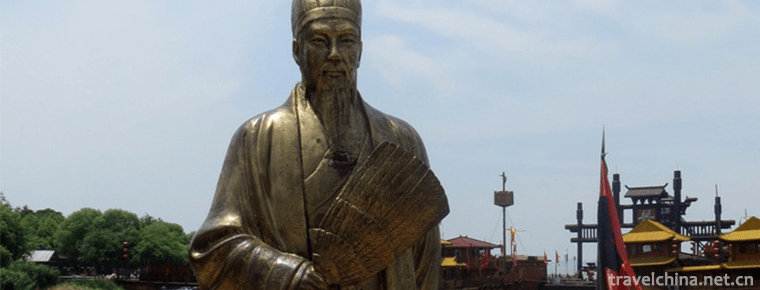
-
1.Shika Snow Mountain
Sheka snow mountain scenic area is located in the southwest of Jian Tang town in Shangri-La County
Time 2018-10-19 -
2.Zhou Qiao old street
Zhouqiao Old Street is a national AAAA tourist attraction. The old street of Ximen in Jiading is located on the west side of Bole Square in downtown Jiading
Time 2019-01-21 -
3.Nanhai Chan Temple
Nanhai Chan Temple, a national AAAA scenic spot, is located in the southeast corner of Runan County, Zhumadian City, Henan Province, China
Time 2019-02-07 -
4.Jade Buddha Garden
Yufo Garden is a famous tourist attraction in Anshan. It is located in the core scenic area of Yufo Mountain. It covers an area of 270,000 square meters. It is surrounded by mountains on three sides a
Time 2019-03-06 -
5.Big flat tone
Da Ping Diao (also known as Ping Diao, Da You Bang and Da Bang Opera), one of the local traditional operas in Henan and Shandong Province, is one of the national intangible cultural heritage.
Time 2019-04-23 -
6.Lodgeroye and Zaszai
Lodgeroye and Zaszai is a representative long poem of Hani poetry style, which is widely spread in all villages inhabited by Hani Biyo people in Hani Autonomous County of Mojiang. There are ten chapte
Time 2019-05-15 -
7.Mudong Mountain Song
Mudong folk song is a traditional folk song sung by the people of Mudong Town, Banan District, Chongqing City. Mudong folk song is a folk song sung by the people of Mudong Town, Banan District, Chongq
Time 2019-06-06 -
8.Ping Tan drama
Pingjiao Opera is a kind of high-pitched opera that sings opera and prose in local dialect. It is a unique local opera in Fujian Province. It was formed in the early Qing Dynasty, originated in Pingna
Time 2019-06-09 -
9.Tujia people slip away
Dalaozi is an ancient folk instrumental ensemble which is the most widely spread in Tujia area. It has a long history, a wide range of music cards, exquisite skills and rich expressiveness. It is a un
Time 2019-06-23 -
10.Tu Wedding
The custom of Tu people's wedding in Huzhu Tu area has a long history. Tu people's wedding custom is gradually formed and developed through the struggle with nature and the long-term practice of produ
Time 2019-06-23 -
11.Beijing University Of Technology
Founded in 1960, Beijing University of Technology is a multi-disciplinary municipal key university with a combination of engineering, science, economics, management, literature, law, art and education
Time 2019-09-06 -
12.Luodai Ancient Town
Luodai Ancient Town is located in Longquanyi District, Chengdu City, Sichuan Province, with a total area of more than 20000 square meters. Luodai Ancient Town is a national historical and cultural town and one of the five "Dongshan five fields" in Chengdu.
Time 2020-11-05